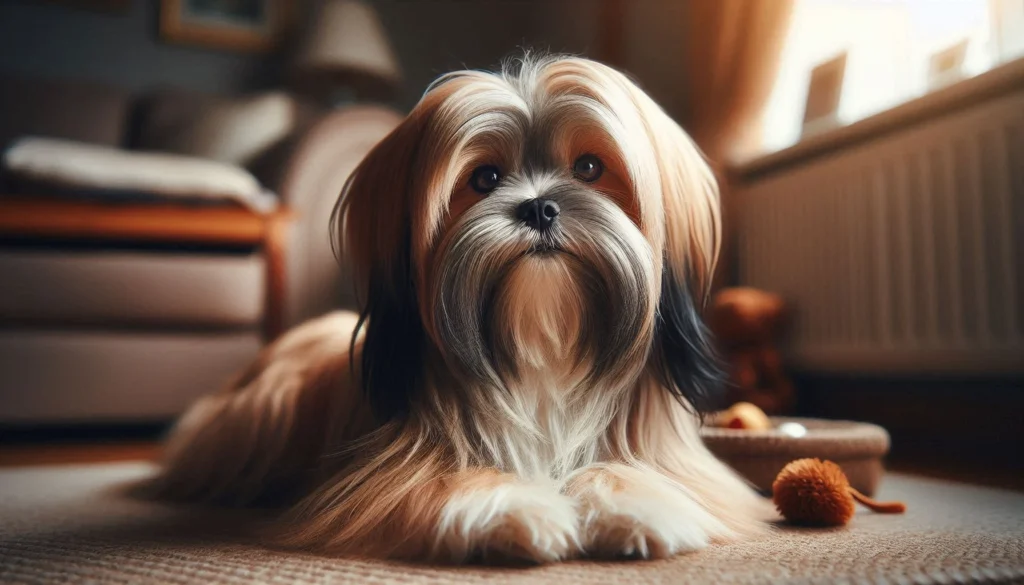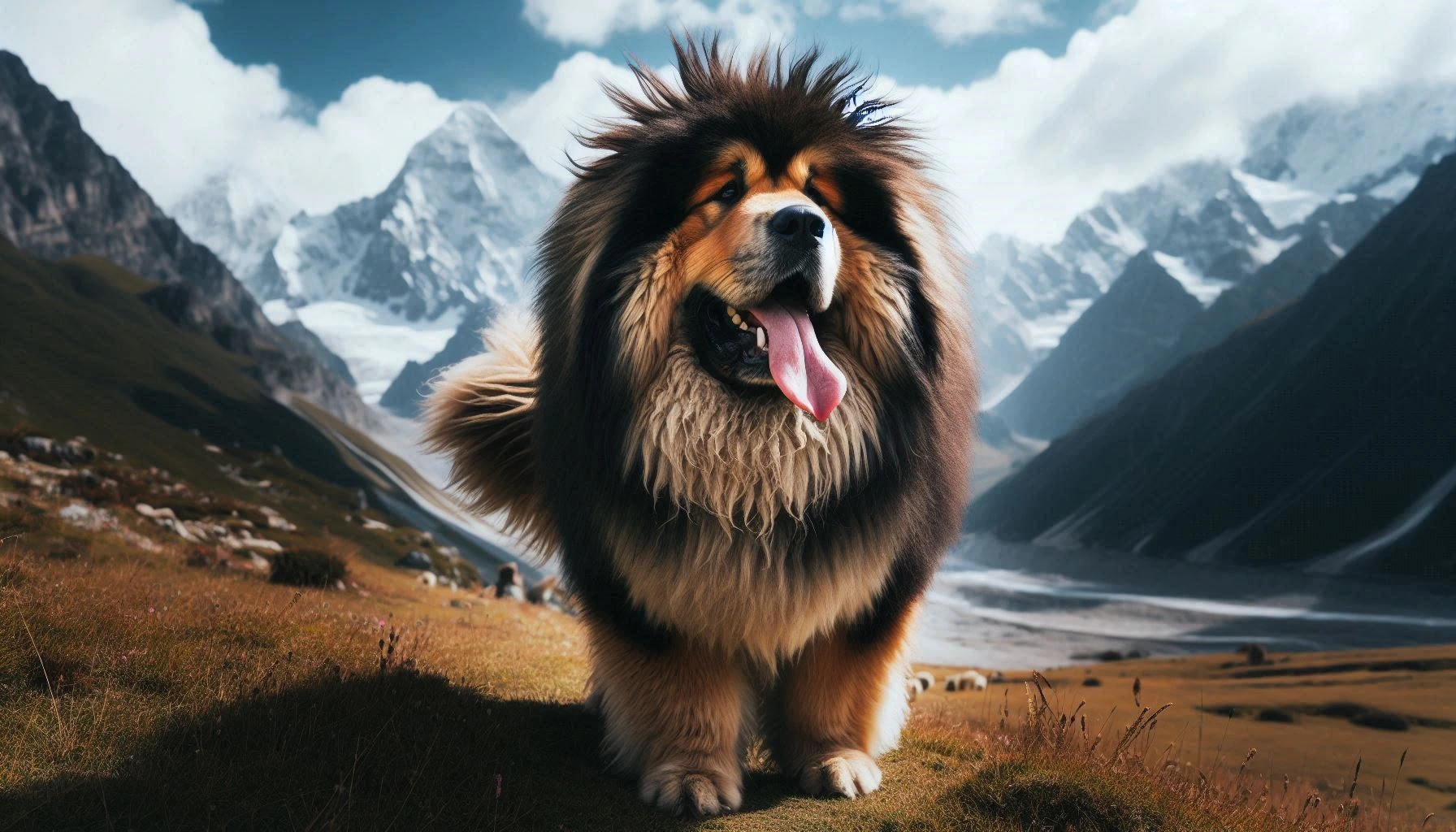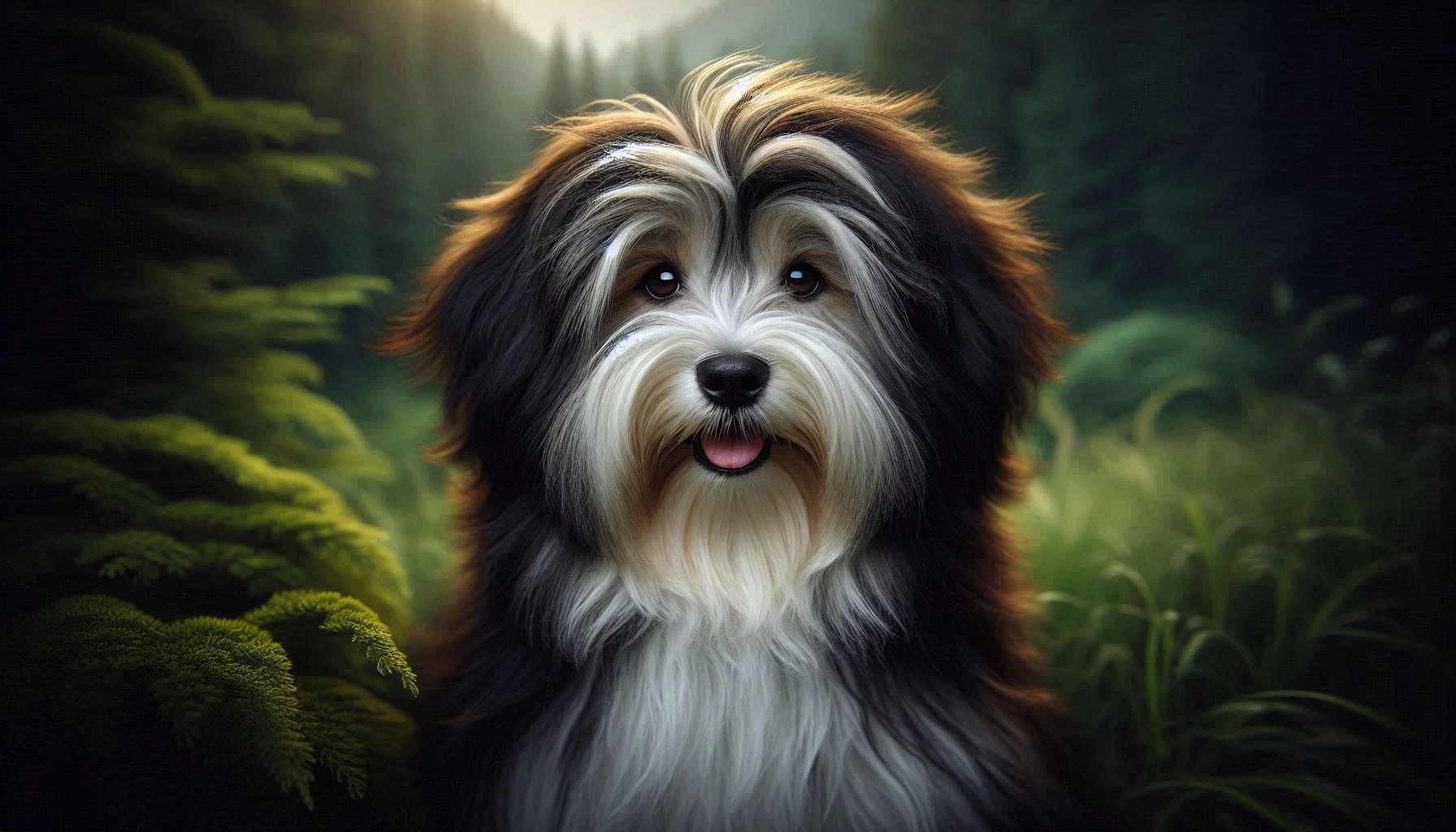Table of Contents
Lhasa Apso Dog Breed
The Lhasa Apso is a small yet sturdy dog breed known for its luxurious long coat and dignified demeanor. Originally bred as a sentinel dog in Tibetan monasteries, the Lhasa Apso has evolved into a beloved companion worldwide. Despite their small size, these dogs are known for their confident and independent nature, making them a popular choice among dog owners who appreciate a pet with a strong personality. This breed is also favored for its adaptability to different living environments, from city apartments to country homes, and its ability to form deep bonds with its human family.
History and Origin

The Lhasa Apso hails from the Himalayan region, specifically Tibet, where it was bred over 2,000 years ago. The name “Lhasa” is derived from Tibet sacred city, while “Apso” translates to “bearded” in Tibetan. These dogs were primarily kept by monks and nobility as indoor watchdogs, alerting their owners to any intruders with their keen hearing and sharp bark.
Historically, the Lhasa Apso was considered a sacred dog, often referred to as the “Bark Lion Sentinel Dog.” It was believed that the souls of deceased lamas could be reincarnated in these dogs before moving on to their next life. The breed was rarely sold, and ownership was typically restricted to Tibetan monasteries or given as gifts to honored individuals. The Lhasa Apso first came to the Western world in the early 20th century, gifted to travelers and dignitaries by the Dalai Lama. Today, the breed is cherished for its unique blend of loyalty, independence, and affectionate nature.
Physical Characteristics

The Lhasa Apso is a small yet robust dog, standing between 10 to 11 inches tall at the shoulder and weighing between 12 to 18 pounds. Despite their compact size, these dogs are well-muscled and sturdy, with a strong, balanced build.
Coat and Colors
One of the most striking features of the Lhasa Apso is its long, flowing coat, which requires regular grooming to maintain its beauty. The coat is straight and dense, often reaching the ground, and comes in a variety of colors, including gold, cream, slate, white, black, and a mix of these shades. The hair around the face often forms a “beard” and “mustache,” giving the breed its distinctive appearance.
Distinctive Features
The Lhasa Apso’s face is characterized by a dark, oval-shaped eye that conveys an expression of intelligence and alertness. Their ears are pendant-shaped, covered with long hair, and their tail is carried over the back in a graceful arc, also draped with a plume of hair. These features, combined with their distinctive gait, give the Lhasa Apso an air of elegance and regality.
Temperament and Personality
The Lhasa Apso is known for its independent and sometimes aloof personality. Unlike some breeds that are eager to please, the Lhasa Apso can be somewhat reserved, particularly with strangers. However, once they form a bond with their owner, they are incredibly loyal and affectionate.
Interaction with People and Animals
Lhasa Apsos are protective and tend to be suspicious of strangers, making them excellent watchdogs. They are often described as “chary of strangers,” meaning they are cautious and reserved around new people. Despite this, they are generally good with children and can be playful and loving with family members. However, due to their independent streak, they may not tolerate rough handling, so they are best suited to families with older children who understand how to interact respectfully with pets.
When it comes to other animals, Lhasa Apsos can get along well with other dogs and pets, especially if they are raised together. However, their strong-willed nature means they may try to assert dominance, so early socialization is crucial.
Health and Lifespan
The Lhasa Apso is generally a healthy breed with a lifespan of 12 to 15 years, and some even live into their late teens. However, like all breeds, they are prone to specific health issues.
Common Health Issues
Some of the health problems that Lhasa Apsos may face include:
- Hip Dysplasia: A genetic condition where the hip joint doesn’t fit properly, leading to arthritis.
- Patellar Luxation: A common issue in small dogs where the kneecap dislocates.
- Progressive Retinal Atrophy (PRA): A degenerative eye disorder that can lead to blindness.
- Allergies: Lhasa Apsos can be prone to skin allergies, which may require dietary adjustments and medication.
Keeping Your Lhasa Apso Healthy
Regular veterinary check-ups, a balanced diet, and routine exercise are essential to keeping your Lhasa Apso healthy. It’s also important to monitor their weight, as obesity can exacerbate health issues like hip dysplasia. Maintaining their coat and skin through proper grooming is also crucial to preventing skin infections and irritations.
Care and Grooming

Caring for a Lhasa Apso requires dedication, particularly when it comes to grooming. Their long coat needs regular attention to prevent matting and tangling.
Grooming Needs
- Brushing: The Lhasa Apso’s coat should be brushed several times a week, if not daily, to keep it free of tangles and mats. A pin brush or slicker brush is recommended for this task.
- Bathing: Regular baths, typically every two to four weeks, are necessary to keep their coat clean and shiny. Using a high-quality dog shampoo and conditioner will help maintain the health of their hair and skin.
- Trimming: While some owners prefer to keep their Lhasa Apso’s coat long, others opt for a “puppy cut,” which is easier to maintain. Regular trimming of the hair around the eyes and paws is also important for their comfort and hygiene.
- Nail Care: Regular nail trimming is essential, as overgrown nails can cause discomfort or even lead to injuries.
Exercise Requirements
Despite their small size, Lhasa Apsos are surprisingly energetic and require regular exercise to stay happy and healthy. A daily walk and some playtime are usually sufficient to meet their exercise needs. However, they are also content to lounge around the house, making them adaptable to various living situations.
Dietary Recommendations
Lhasa Apsos should be fed a high-quality dog food that is appropriate for their size, age, and activity level. Portion control is important, as this breed can be prone to obesity. Treats should be given in moderation, and table scraps should be avoided to prevent digestive issues and unhealthy weight gain.
Training and Socialization
Training a Lhasa Apso can be a rewarding experience, but it requires patience and consistency. This breed is intelligent but can be independent and sometimes stubborn.
Training Tips
- Start Early: Begin training as early as possible, focusing on basic commands like “sit,” “stay,” and “come.” Early training helps establish boundaries and expectations.
- Positive Reinforcement: Use positive reinforcement techniques, such as treats and praise, to motivate your Lhasa Apso. Harsh training methods are not effective with this breed and can lead to fear or aggression.
- Crate Training: Crate training can be beneficial for housebreaking and providing your Lhasa Apso with a safe, secure space of their own.
Socialization
Socializing your Lhasa Apso from a young age is crucial to ensure they grow up to be well-adjusted and confident. Expose them to various people, environments, and other animals to help them develop a calm and friendly demeanor. This will also help reduce their natural wariness of strangers and prevent potential behavioral issues.
Suitability as a Family Pet

The Lhasa Apso can make an excellent family pet, but they are best suited for households that understand and respect their unique needs and personality traits.
Living Environment Considerations
Lhasa Apsos are adaptable to various living environments, whether in a small apartment or a large house. However, they do best in homes where they are not left alone for long periods, as they thrive on companionship. They are relatively low-energy indoors, making them suitable for apartment living, but they still need regular outdoor exercise.
Energy Levels and Family Dynamics
While Lhasa Apsos are generally calm and composed, they do have bursts of energy and enjoy playtime. They are well-suited for families with older children who can engage with them gently and respectfully. Given their protective nature, they can be good watchdogs, alerting the family to any potential dangers.
Fun Facts and Trivia
- Ancient Origins: The Lhasa Apso is one of the oldest dog breeds in the world, with a history dating back over 2,000 years.
- Gift of Good Luck: In Tibetan culture, Lhasa Apsos were often given as gifts, believed to bring good luck to their new owners.
- “Lion Dog”: The breed is sometimes called the “Lion Dog” because of its resemblance to the snow lions depicted in Tibetan mythology.
Similar Dog Breeds to the Lhasa Apso



- Shih Tzu: Often confused with the Lhasa Apso, the Shih Tzu is another ancient breed with a long, flowing coat and a friendly, outgoing personality. Shih Tzus are known for their affectionate nature and make excellent companions.
- Maltese: The Maltese is a small toy breed with a long, silky white coat. Like the Lhasa Apso, they are known for their elegant appearance and require regular grooming. Maltese dogs are friendly, affectionate, and great with families.
- Tibetan Terrier: Despite its name, the Tibetan Terrier is not a true terrier. It shares the Lhasa Apso’s origins and has a similar long coat. Tibetan Terriers are lively, affectionate, and make excellent family pets.
Conclusion
The Lhasa Apso is a unique and charming dog breed with a rich history and a distinctive personality. While they may require more grooming and patience than some other breeds, the rewards of owning a Lhasa Apso are immeasurable. They are loyal, protective, and deeply affectionate with their families, making them a wonderful companion for those who appreciate their independent spirit and regal demeanor.
If you’re considering adding a Lhasa Apso to your family, take the time to learn more about their specific needs and whether they align with your lifestyle. With the right care, training, and love, a Lhasa Apso can be a cherished member of your household for many years to come.
FAQ
Is the Lhasa Apso a dangerous dog?
No, the Lhasa Apso is not a dangerous dog. While they can be protective and may be wary of strangers, they are generally not aggressive. With proper training and socialization, Lhasa Apsos can be friendly and affectionate companions.
Is the Lhasa Apso the best guard dog to protect my family?
The Lhasa Apso can be a good watchdog due to its alert nature and tendency to bark at unfamiliar sounds or people. However, they are not typically used as guard dogs due to their small size. They are better suited to alert you to potential intruders rather than physically confront


